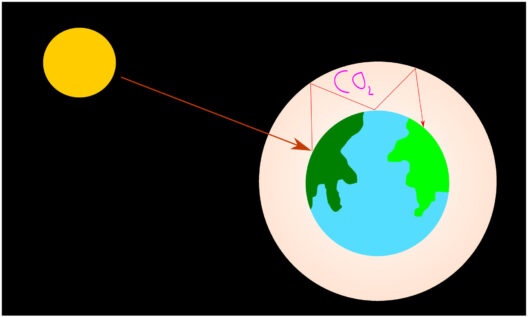Imagine you are at a local playground, watching children swing back and forth. They soar high into the air, seemingly defying gravity, only to come back down, gaining speed as they descend. Have you ever wondered: What happens to the energy in their motion? Is any of it lost when they swing, or is it conserved as they move? This question delves into the intriguing realm of kinetic energy and its conservation, a fundamental principle that governs much of our physical world.
To unravel the mystery of kinetic energy, we must first define what it is. Kinetic energy is the energy an object possesses due to its motion. Mathematically, it can be expressed with the formula: K.E. = 1/2 mv², where m represents mass and v stands for velocity. The faster an object moves and the more massive it is, the greater its kinetic energy. This principle is applicable to myriad phenomena, from a rolling ball to planets orbiting the sun.
At its core, the concept of conservation of energy posits that within a closed system, energy cannot be created or destroyed; it can only change forms. In the swing example, as the child ascends, kinetic energy is transformed into potential energy, which is the stored energy due to an object’s position. At the peak of the swing, potential energy is at its maximum while kinetic energy reaches its minimum. As the swing descends, potential energy yields back to kinetic energy as velocity increases.
Isn’t it fascinating how energy flows seamlessly during motion? This interplay raises a compelling challenge: What would happen if we could capture all that kinetic energy and store it? The implications for sustainability and renewable energy could be profound.
The conservation of kinetic energy is observable not only in playground swings but also in various physical systems. Picture a rollercoaster. As the train climbs the initial rise, energy is stored, and the thrilling descent converts that potential energy back into kinetic energy, propelling the train down the track. In an ideal scenario, where friction and air resistance are negligible, the total mechanical energy remains constant; the energy is merely transitioning from one form to another.
However, the real world often complicates this simplistic view. Energy losses due to friction, air resistance, and other dissipative forces imply that not all kinetic energy is conserved in a system. For example, in a car rolling to a stop, kinetic energy is transformed into thermal energy due to friction between the tires and the road. This inefficiency presents challenges as we strive for greener technologies that harness and utilize energy more effectively.
Wind turbines are a prime example of innovative energy conversion. They take the kinetic energy of wind and convert it into mechanical energy, which is then transformed into electrical energy for our homes. Yet, in these systems, only a portion of the kinetic energy is captured; the rest is lost to the atmosphere. In the quest for maximizing energy conservation, researchers are experimenting with designs to enhance energy capture, demonstrating that kinetic energy conservation remains at the forefront of environmental discourse.
Particularly captivating is the phenomenon known as elastic collisions, where kinetic energy is conserved before and after the event. Consider two billiard balls colliding on a table. In an ideal elastic collision, both momentum and kinetic energy are conserved through the interaction, a stark illustration of perfect energy transfer. Yet, in reality, most collisions, such as a car crash, are inelastic, resulting in varied transformations of kinetic energy and often significant energy loss due to deformation.
The inquiry into kinetic energy conservation also extends into the microscopic realm, where it influences the behavior of particles. The kinetic molecular theory of gases describes how gas particles move and collide, and it is here that kinetic energy conservation is paramount in understanding thermodynamic processes. The translation of micro-level energy conservation to macro-level implications showcases how deeply intertwined kinetic energy is with environmental processes, like climate change.
As we confront the environmental crises of today—global warming, resource depletion, and pollution—it becomes imperative to regard kinetic energy conservation as not merely a physical principle but a guiding ethos for sustainability. The principles of energy conservation can inspire innovative solutions, like zero-energy buildings that optimize movement and energy usage.
Moreover, understanding the nuances of kinetic energy can empower individuals to become stewards of energy efficiency. Small changes, such as utilizing public transportation or incorporating regenerative braking systems in electric vehicles, enhance kinetic energy conservation on both personal and societal levels. The ripple effects of these choices contribute to a more sustainable world, demonstrating the power of individuals to effect meaningful change.
In the grand orchestration of the universe, kinetic energy conservation is a harmonious principle, encouraging us to recognize the potential held within motion. As we unearth the secrets of kinetic energy and its conservation, we unlock opportunities for ingenuity in design and energy transformation, serving both our societal needs and the health of the planet. By embracing this knowledge, we embark on a journey towards a sustainable future, one motion at a time.
Ultimately, the question persists: Are we ready to harness kinetic energy’s secrets and pave the way for innovation? Each step we take towards understanding and conserving energy reveals not just physical laws, but also the potential for a greener tomorrow. Will you embrace the challenge and explore the possibilities within the rhythm of motion?






